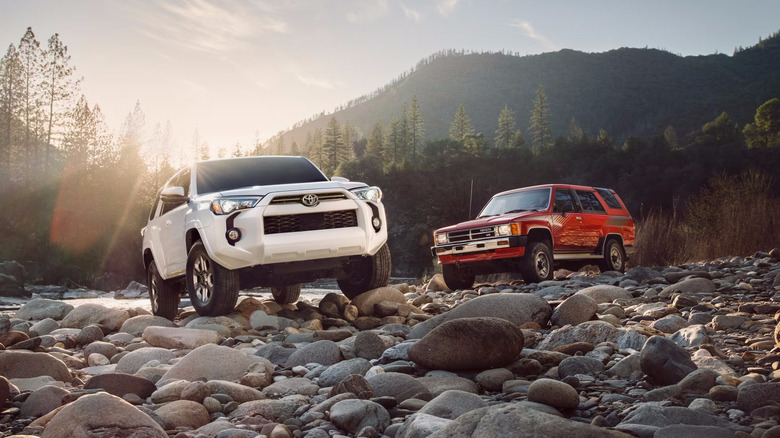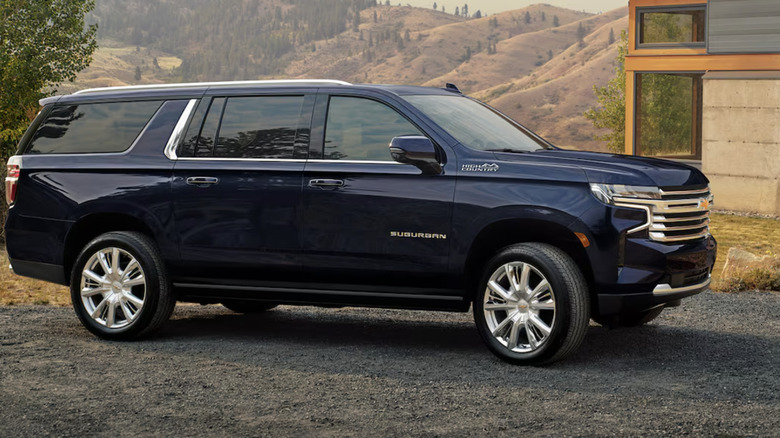What Does SUV Stand For? The Meaning Behind The Abbreviation
The automotive realm is jam-packed with acronyms. There's EV for electric vehicle, MDS for Multi-Displacement System, ABS for Anti-lock Brake System, and hundreds of other abbreviations. One such linguistic shortcut that has become very common in the last couple of decades is SUV, but what does SUV mean and what is the history of this term?
SUV stands for "sport utility vehicle," and designates a broad range of models that have reasonable cargo-carrying capacity and some ability to go off-road. Most SUVs have four- or all-wheel drive, and buyers and manufacturers alike have been drawn to these cars in recent years. According to the International Energy Agency, SUVs accounted for nearly half of worldwide vehicle sales in 2023.
Automakers in the United States took advantage of a Department of Energy policy that categorized all SUVs as light trucks for the purposes of Corporate Average Fuel Economy (CAFE) standards categorization, at least through 2011. That misclassification allowed manufacturers to meet CAFE standards while simultaneously responding to buyers' desires for larger vehicles.
About half of the world's most popular vehicles are SUVs
According to Fiat Group World, 50 of the top 100 and 220 of the 500 most popular vehicles worldwide in 2023 were SUVs of some sort. The history of the SUV stretches back all the way to the 1935 Chevrolet Caryall Suburban. The Chevrolet Suburban is now in its 12th generation and is the longest-running nameplate in the industry. Toyota brought the Land Cruiser to the U.S. in 1958, and in the 1960s, the Chevy Blazer and International Harvester Scout joined the lineup of SUVs made in the U.S. The array of SUVs now includes models of various sizes, from subcompacts and compacts known as "crossovers" to full-sized beasts like the Suburban and Toyota Sequoia.
This trend toward SUVs continues to this day. According to Car and Driver, four of the top 12 vehicles sold through the first half of 2024 were SUVs, and three crossovers ranked in the top 10. The Toyota RAV4 trailed only the Ford F-series and Chevy Silverado pickups with nearly 250,000 units sold, and the Honda CR-V lagged two spots below at just under 200,000. The Nissan Rogue landed ninth with just over 141,000 sold, and the Jeep Grand Cherokee was 12th at just under 107,000. The Grand Cherokee's lineage traces back to the XJ Cherokee, which was introduced in 1984 and helped acclimate U.S. buyers to the SUV.

